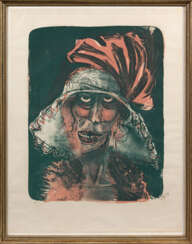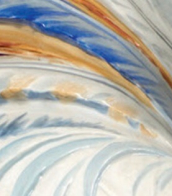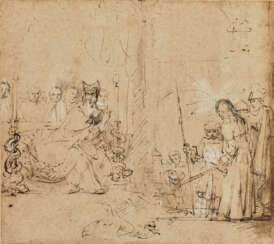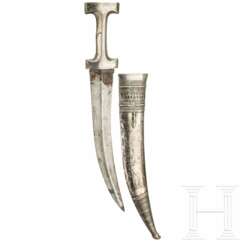otto rost

John Wootton was an English painter of sporting subjects, battle scenes and landscapes, and illustrator.






.jpg)
Ernst Heinrich Barlach was a German expressionist sculptor, medallist, printmaker and writer. Although he was a supporter of the war in the years leading to World War I, his participation in the war made him change his position, and he is mostly known for his sculptures protesting against the war. This created many conflicts during the rise of the Nazi Party, when most of his works were confiscated as degenerate art. Stylistically, his literary and artistic work would fall between the categories of twentieth-century Realism and Expressionism.


Otto Guericke, from 1666 von Guericke (pronunciation and original spelling: Gericke) was a German politician, jurist, physicist and inventor. He is best known for his experiments on air pressure with the Magdeburg hemispheres. He is considered the founder of vacuum technology.


Willem Drost was a notable Dutch Golden Age painter and printmaker known for his history paintings and portraits. His journey through the art world led him from his birthplace in Amsterdam to the vibrant cultural scene of Venice, where he spent his final years. Drost's work, particularly influenced by his time as one of Rembrandt's most gifted pupils, showcases a mastery of Baroque style, characterized by dramatic use of light and shadow, and a focus on realism and emotional depth.
Despite the relatively small number of works directly attributed to Drost, his legacy is significant, with several of his paintings having been mistakenly attributed to Rembrandt for centuries. This confusion underscores Drost's skill in emulating Rembrandt's style so closely that discerning between the master's and the pupil's work became a subject of scholarly investigation. Among Drost's known pieces, "Bathsheba" (1654), held at the Louvre, stands out for its sensuous portrayal of the biblical figure, showcasing Drost's ability to capture the nuanced interplay of light and shadow, as well as the psychological complexity of his subjects.
Drost's contribution to the Dutch Golden Age of painting is now more clearly recognized, with artworks such as "The Polish Rider," once thought to be by Rembrandt, suggested by some scholars as possibly being his work. While controversial, this reevaluation of Drost's contributions highlights the ongoing discussion about attribution within the art community and the importance of pupils in the studios of great masters like Rembrandt.
For collectors and experts in art and antiques, Willem Drost offers a fascinating glimpse into the world of the Dutch Golden Age, where the lines between master and pupil blur in the shared pursuit of artistic excellence. His works, housed in museums like the Ashmolean Museum in Oxford, the Metropolitan Museum of Art in New York City, and The Wallace Collection in London, continue to captivate audiences with their beauty and emotional depth.
To stay informed about new discoveries, sales, and auction events related to Willem Drost, signing up for updates from art galleries and auction houses is recommended. This ensures access to the latest information and opportunities to engage with the works of this remarkable artist who played a vital role in the legacy of the Dutch Golden Age.
























![[AEROSTATICA] - Lotto composto da diversi libri sull'aerostatica stampati a inizio Ottocento fra](/assets/image/picture_942488/75847/p9wxuqm7syj0sfzrsks1cgeri9dix1afmiy6nwb02vggznaycdnaswormoftiwc1596201882jpg__fix_374_244.jpeg)
![[AEROSTATICA] - Lotto composto da diversi libri sull'aerostatica stampati a inizio Ottocento fra](https://veryimportantlot.com/assets/image/picture_942488/75847/p9wxuqm7syj0sfzrsks1cgeri9dix1afmiy6nwb02vggznaycdnaswormoftiwc1596201882jpg__fix_374_244.jpeg)































![[AEROSTATICA - BOSINADE] - Lotto di 5 bosinade a tema aeronautico](/assets/image/picture_942486/13528/qbjmbyuycwekugnapr2l3whmuoqoyol5-mblszk8aild9dde0kdvts9wwdopctun1596201882jpg__fix_374_244.jpeg)
![[AEROSTATICA - BOSINADE] - Lotto di 5 bosinade a tema aeronautico](https://veryimportantlot.com/assets/image/picture_942486/13528/qbjmbyuycwekugnapr2l3whmuoqoyol5-mblszk8aild9dde0kdvts9wwdopctun1596201882jpg__fix_374_244.jpeg)





![[AEROSTATICA] - Una serie di testi dedicati all'aerostatica: Descrizione della nuova macchina aerostatica](/assets/image/picture_942489/69eff/xptthsyyyimatmv1ihwoo2bfrwujdhalniwo0zxeclqrm6oold-rpoc7awaiz94h1596201882jpg__fix_374_244.jpeg)
![[AEROSTATICA] - Una serie di testi dedicati all'aerostatica: Descrizione della nuova macchina aerostatica](https://veryimportantlot.com/assets/image/picture_942489/69eff/xptthsyyyimatmv1ihwoo2bfrwujdhalniwo0zxeclqrm6oold-rpoc7awaiz94h1596201882jpg__fix_374_244.jpeg)














